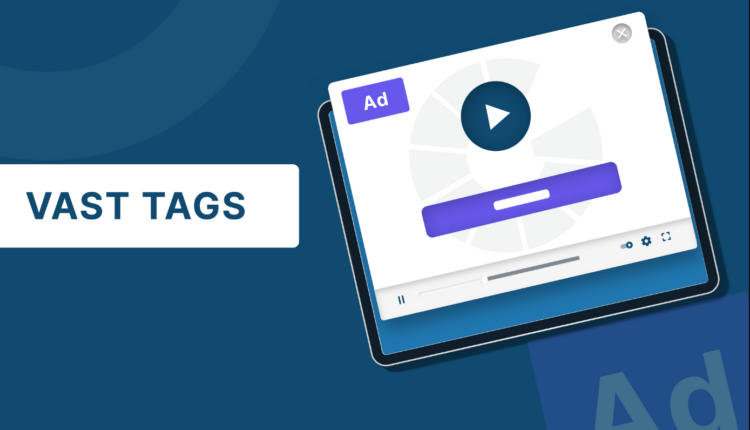In the world of online video advertising, VAST and VPAID tags are crucial for delivering and managing video ads. These tags help advertisers and publishers ensure that video ads play correctly and deliver the intended user experience. But what exactly are these tags, and how do they differ from each other? In this article, we’ll break down the concepts of VAST and VPAID tags to help you understand their roles and how they impact online video ads.
What is a VAST Tag?
VAST stands for Video Ad Serving Template. It is a standard developed by the Interactive Advertising Bureau (IAB) to streamline the process of serving video ads. The VAST tag is essentially a piece of code that allows video players to request and display video ads from an ad server.
How VAST Tags Work?
When a video player is ready to play an ad, it sends a request to the ad server using the VAST tag. The ad server then responds with a VAST XML document, which includes all the information needed for the video player to display the ad. This document typically contains:
- Ad Creative: The actual video ad or image that will be shown.
- Tracking URLs: These help track the performance of the ad, such as how many times it was viewed or clicked.
- Clickthrough URLs: These direct users to a website or landing page when they click on the ad.
- Additional Parameters: Information about how the ad should be displayed or interacted with.
VAST tags are primarily used for standard video ad delivery and ensure that the ad is compatible with different video players and platforms.
What is a VPAID Tag?
VPAID stands for Video Player-Ad Interface Definition. It is a standard that allows for more interactive and engaging ad experiences within video players. Unlike VAST, which focuses on serving and tracking ads, VPAID enables rich interactions between the ad and the user.
How VPAID Tags Work?
A VPAID tag enhances video ads by adding interactivity. When serving a VPAID ad, the video player loads it using the VPAID JavaScript API. This API allows the ad to:
- Interact with Users: VPAID ads can include interactive elements such as clickable buttons or forms.
- Track User Actions: They can track specific user interactions and provide more detailed analytics.
- Respond to Events: VPAID ads can respond to user actions like mouse movements or clicks in real time.
This interactive capability makes VPAID ads more engaging but also requires more advanced integration with video players.
Key Differences Between VAST and VPAID Tags
While both VAST and VPAID tags are used in online video advertising, they serve different purposes and offer distinct features. Here are the main differences:
Purpose:
- VAST: Primarily used for delivering video ads. It focuses on ensuring that the ad is played correctly and tracked properly.
- VPAID: Used for creating interactive video ads. It enables richer user interactions and more detailed analytics.
Functionality:
- VAST: Provides basic ad playback functionality. It tells the video player what ad to play and includes tracking and clickthrough information.
- VPAID: Allows for advanced features like interactive elements and real-time user engagement. It provides a way for ads to interact with users and adapt to their actions.
Compatibility:
- VAST: Supported by most video players and ad servers, making it a widely accepted standard for video ad delivery.
- VPAID: Requires video players that support the VPAID JavaScript API, which may not be as universally compatible as VAST.
Complexity:
- VAST: Generally simpler to implement and integrate. It focuses on delivering ads in a standard format.
- VPAID: More complex due to its interactive features and the need for integration with the VPAID API.
Choosing Between Both of Them
Deciding whether to use VAST or VPAID tags depends on your advertising goals and the user experience you want to create.
- Use VAST Tags if your primary goal is to serve and track standard video ads, VAST is indeed suitable for most video advertising needs and ensures broad compatibility with various video players.
- Use VPAID Tags if you want to create interactive ads that offer a richer user experience. VPAID is ideal for campaigns that aim to engage users with interactive elements and provide detailed analytics on user interactions.
Conclusion

Both VAST and VPAID tags play important roles in the online video advertising ecosystem. Understanding their differences can help you choose the right approach for your ad campaigns, whether you’re looking for standard video ad delivery or interactive ad experiences. By leveraging these tags effectively, you can indeed enhance your advertising strategies and better meet your campaign objectives.
Frequently Asked Questions (FAQs)
1. What is the main difference between VAST and VPAID tags?
VAST tags deliver and track standard video ads, while VPAID tags create interactive and engaging ad experiences with real-time user interactions.
2. When should I use VAST tags?
Use these tags when you need to deliver standard video ads across various platforms and ensure broad compatibility with video players.
3. What benefits do VPAID tags offer?
VPAID tags provide interactive features and detailed analytics by allowing ads to include clickable elements and further respond to user actions.
4. Are VPAID tags compatible with all video players?
No, video players must support the VPAID JavaScript API to be compatible with VPAID tags, which is less common than support for VAST tags.


